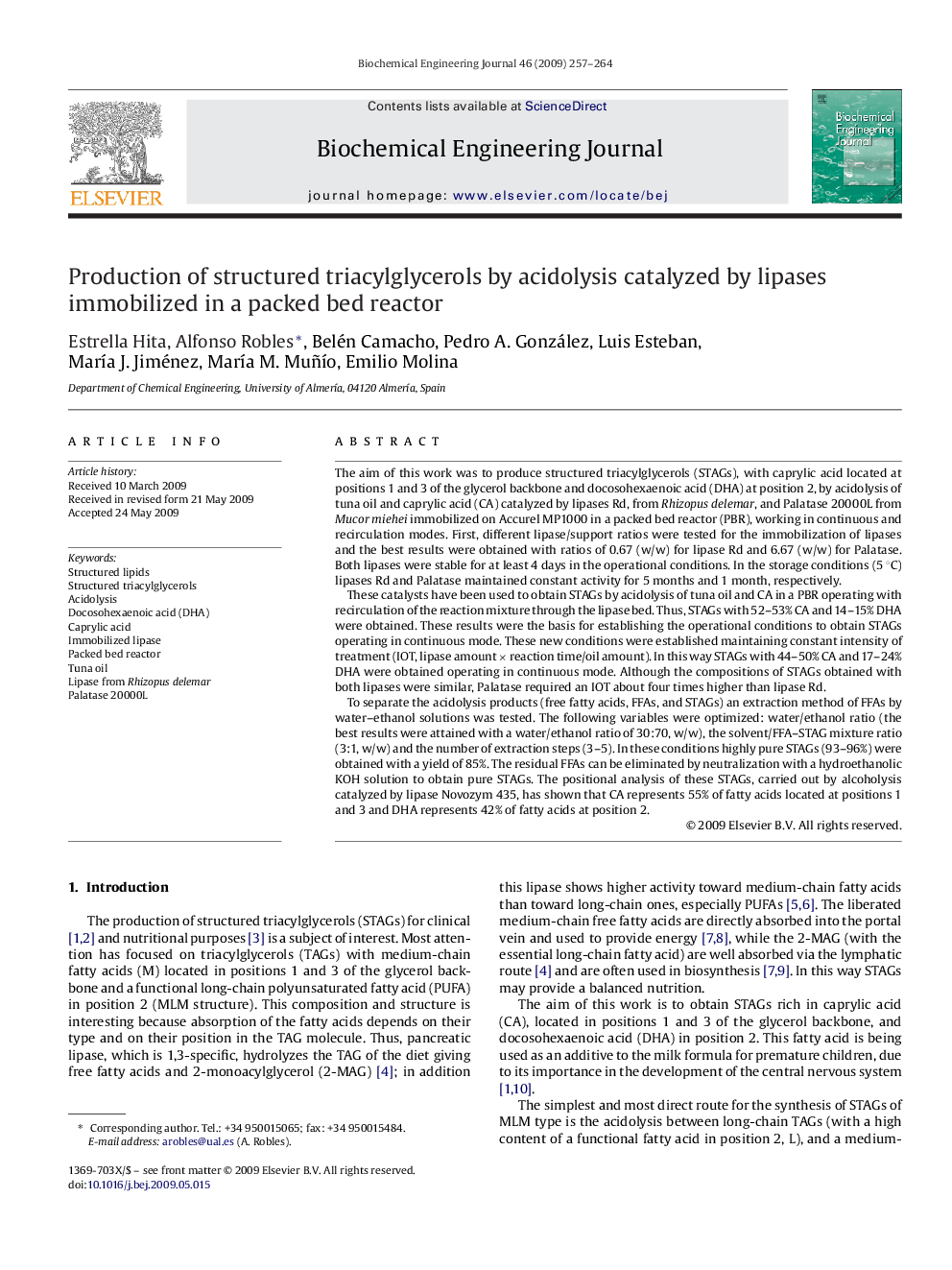| کد مقاله | کد نشریه | سال انتشار | مقاله انگلیسی | نسخه تمام متن |
|---|---|---|---|---|
| 3995 | 203 | 2009 | 8 صفحه PDF | دانلود رایگان |

The aim of this work was to produce structured triacylglycerols (STAGs), with caprylic acid located at positions 1 and 3 of the glycerol backbone and docosohexaenoic acid (DHA) at position 2, by acidolysis of tuna oil and caprylic acid (CA) catalyzed by lipases Rd, from Rhizopus delemar, and Palatase 20000L from Mucor miehei immobilized on Accurel MP1000 in a packed bed reactor (PBR), working in continuous and recirculation modes. First, different lipase/support ratios were tested for the immobilization of lipases and the best results were obtained with ratios of 0.67 (w/w) for lipase Rd and 6.67 (w/w) for Palatase. Both lipases were stable for at least 4 days in the operational conditions. In the storage conditions (5 °C) lipases Rd and Palatase maintained constant activity for 5 months and 1 month, respectively.These catalysts have been used to obtain STAGs by acidolysis of tuna oil and CA in a PBR operating with recirculation of the reaction mixture through the lipase bed. Thus, STAGs with 52–53% CA and 14–15% DHA were obtained. These results were the basis for establishing the operational conditions to obtain STAGs operating in continuous mode. These new conditions were established maintaining constant intensity of treatment (IOT, lipase amount × reaction time/oil amount). In this way STAGs with 44–50% CA and 17–24% DHA were obtained operating in continuous mode. Although the compositions of STAGs obtained with both lipases were similar, Palatase required an IOT about four times higher than lipase Rd.To separate the acidolysis products (free fatty acids, FFAs, and STAGs) an extraction method of FFAs by water–ethanol solutions was tested. The following variables were optimized: water/ethanol ratio (the best results were attained with a water/ethanol ratio of 30:70, w/w), the solvent/FFA–STAG mixture ratio (3:1, w/w) and the number of extraction steps (3–5). In these conditions highly pure STAGs (93–96%) were obtained with a yield of 85%. The residual FFAs can be eliminated by neutralization with a hydroethanolic KOH solution to obtain pure STAGs. The positional analysis of these STAGs, carried out by alcoholysis catalyzed by lipase Novozym 435, has shown that CA represents 55% of fatty acids located at positions 1 and 3 and DHA represents 42% of fatty acids at position 2.
Journal: Biochemical Engineering Journal - Volume 46, Issue 3, 1 November 2009, Pages 257–264